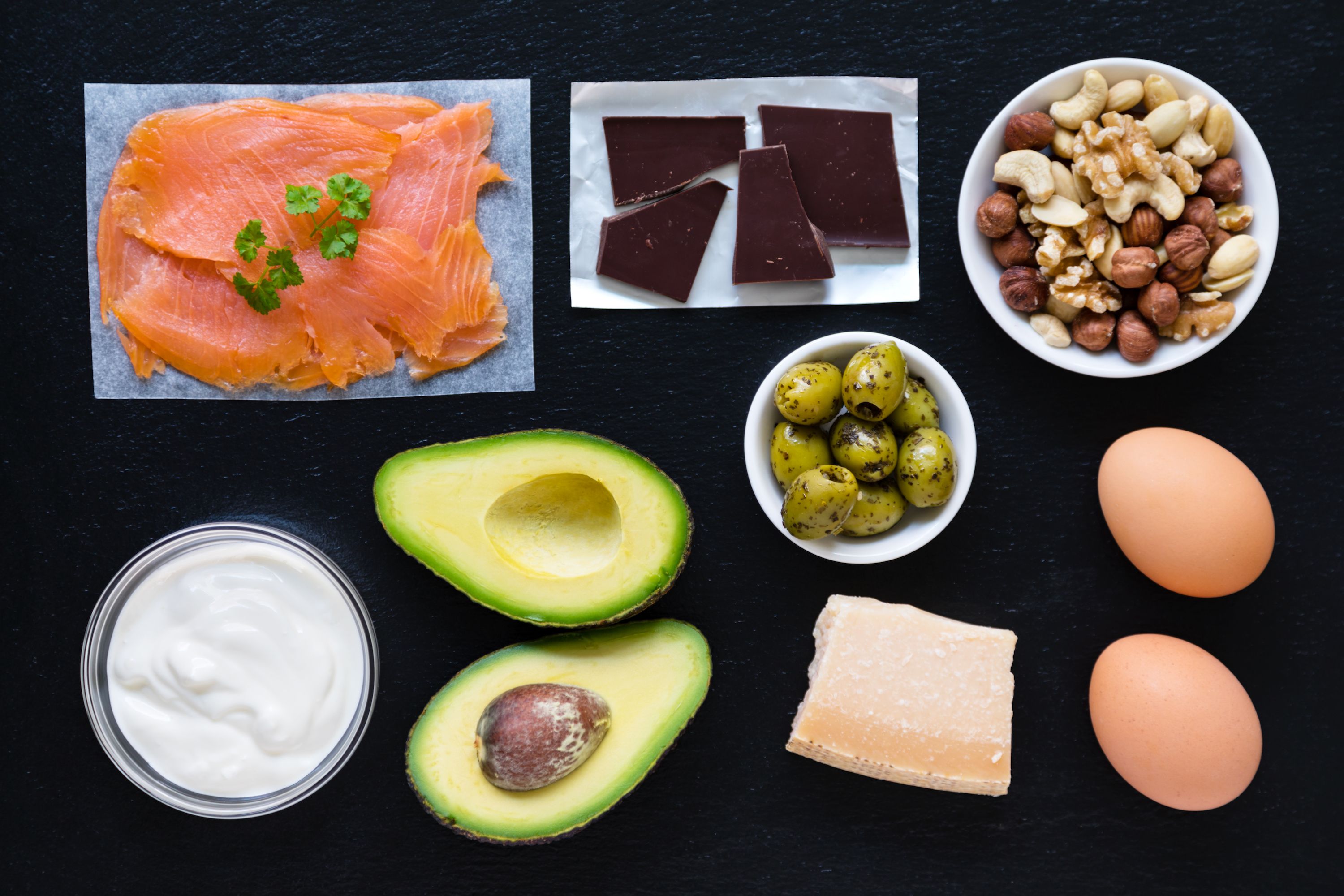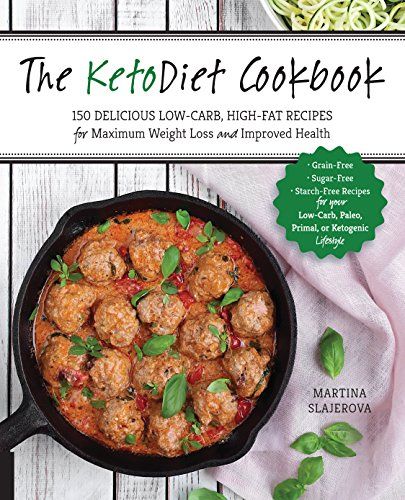This Simple Hack Makes It So Much Easier For Keto Lovers To Log Meals And Macros
Unless you just love to spend your time counting calories and macros (hey, you might!), the keto diet can be a major pain in the you-know-what. But if you have a specific weight-loss goal in mind, you need to follow the pretty keto diet regimen closely and not only kinda-sorta commit to it…and that’s not exactly an easy or fun task.
To be frank, tracking your macros is crucial if you’re taking a serious approach with keto. But don’t stress: There are a number of so-simple ways to stop being a keto diet slacker and become a master keto diet tracker—and your solutions are all right here.
From smartphone app trackers and online programs to dietitian-approved tips and tricks, we have all the hacks you need to log everything you’re eating on keto (or even another eating plan!) more accurately without wanting to yank your hair out in the process:
Put Carb Manager on all your devices.
If you’re just getting started with keto, you might be feeling the stress of the diet’s major learning curve: A bunch of food is now on a don’t-eat list and you’re supposed to be tracking calories and macros (and maybe ketones and glucose levels, depending on how hardcore of an approach you’re taking).

That’s a lot of balls to keep in the air, but Carb Manager is an easy-to-use keto diet tracker available in app form and on the web, so you can log your breakfast whether you’re on the subway heading into work or once you’re sitting down at your desk. It allows you to meal plan, make shopping lists, and sync up to other apps and devices (like your FitBit).
“The app only takes a few seconds to [update],” says Jessie Grady, who lives in Chicago and follows the keto diet. “You can scan barcodes, and most food items are already entered.”
Or, try the fan-favorite keto app.
Not all calorie-tracking apps are created equal, and some programs make the process feel even more tedious than just using a pen and paper. But keto lovers recommend either one of the two versions of the KetoDiet app (KetoDiet and KetoDiet Basic), which not only gives you recipe and restaurant suggestions but helps you log the nutritional info of more than 1 million foods so you have this info even when you’re on the go. What’s more: These apps—created by the author ofThe KetoDiet Cookbook and Keto Slow Cooker & One-Pot Meals, Martina Slajerova—also give subscribers advice straight from Slajerova’s fan-favorite KetoDiet Blog.

But if you’re a more traditional gal, you might like the MyFitnessPal app, which is one of the most recommended calorie tracking apps around because of how user-friendly it is, and the fact that it’s free.
MyFitnessPal is expert-approved by Amy Gorin, RD, MS, of Amy Gorin Nutrition in the New York City area: “I really like this app because you can see the breakdown of what you’re eating for calories as well as important nutrients like carbs, fat, protein, and sodium,” Gorin explains. “It’s simple to use, and you can track from your phone.”
Start a designated food journal.
Remember that diary you kept in high school? You’re gonna want to break it out again. Food journaling gets two thumbs up from dietitians as a way to get a clear snapshot of everything you’re eating in a day and also spot places where you might be running into ongoing problems with your diet.

“I recommend clients journal in the moment versus end-of-day to make sure everything is accounted for,” says registered dietitian Amanda Baker Lemein, in regards to food journaling as part of any eating plan (not just keto). “[It also helps] you identify which times of day or experiences make you more vulnerable to getting off track, so you can make adjustments and…become more prepared in the future.”
Embrace monotony.
Another way to hack your keto diet tracking is to eat the same (or almost the same) thing every day; that way, you won’t have to put in the time and effort to figure out how many calories and macros to log each morning.
“When I first started keto I found it helpful to have really consistent (albeit boring) meals that I could eat everyday and not have to think too much about,” says Nancylee Bouscher of Mount Vernon, Washington, another keto devotee. She was then able to mix things up over time as she got more comfortable with the diet.
For example, if you always start with a basic egg frittata for breakfast but make equal swaps for your veggies and protein on different days, you’ll be able to track your intake in a hot second (without feeling like you’ve eaten the Same. Exact. Thing. seven days in a row).

This is also why you should regularly stock your kitchen with the keto-friendly foods you love. It’s pretty easy to get discouraged on keto, especially if you really love some of the foods that are now off-diet (like starchy vegetables and sugar). To combat this, Grady says she focuses on what she can eat instead of what she can’t.
She keeps keto diet staples—spinach, roasted chicken, almonds, blueberries, olives, and avocados—on hand so she’s less likely to go rogue when feeling hangry (and blow her calorie or macro count). As an added bonus, keeping up a stock of keto-friendly foods means you’ll become a pro at tracking those staples since you’ll be doing it over and over again.
Go the no-frills route: a DIY spreadsheet or word document.
If you’re a little technologically challenged and just can’t get into the groove of updating an app all day long, consider a keto diet tracker that’s a little more old-fashioned.
“My husband made me a spreadsheet on Google Docs so I can track it on my phone,” says keto fan Laurel Ann Whitlock of Orlando, Florida. “None of the apps did exactly what I wanted…[the spreadsheet] is less pretty but way more functional.”
If an app just doesn’t fit your lifestyle, don’t be afraid to create your own system to keep you accountable.
Track your meals in advance.
Gorin has a pretty genius solution to the logging problem for anyone who follows a diet closely: “When you’re trying to meet specific dietary guidelines, it really helps to track ahead of time what you’re going to eat—both so you can stay in line with your dietary plan and also so you’ll be less likely to deviate from what you outlined for your meals for the day,” she says.

So rather than wait until you’ve chowed down (or, worse, waiting until bedtime to try and remember everything you ate all day), plan out your keto meals and count your calories and macros in advance. You’ll save time on the spot and be more likely to stick with the healthy choices you’ve planned for yourself by taking out the guesswork.
And if logging *everything* is still too daunting, zero in on a specific nutrient.
Keto dieter Nikki Saltz, from Toronto, struggles with tracking protein, for example. So, she focuses most of her energy on tracking only her protein consumption. “For me the challenge is tracking protein more than carbs,” she says, so she doesn’t worry about tracking her carbs.
If you get in a groove with your, say, carb consumption and have a good sense of what you’re consuming in that category, turn your focus to another macro until you feel comfortable logging less of it and doing it by memory based on the keto foods you tend to eat consistently.
Keep in mind, there isn’t exactly one “right way” to do keto, as Women’s Health reported previously. So follow the carb/fat/protein percentages that seem to function best for your body, and ask a dietitian for assistance if you’re unsure.
Source: Read Full Article
